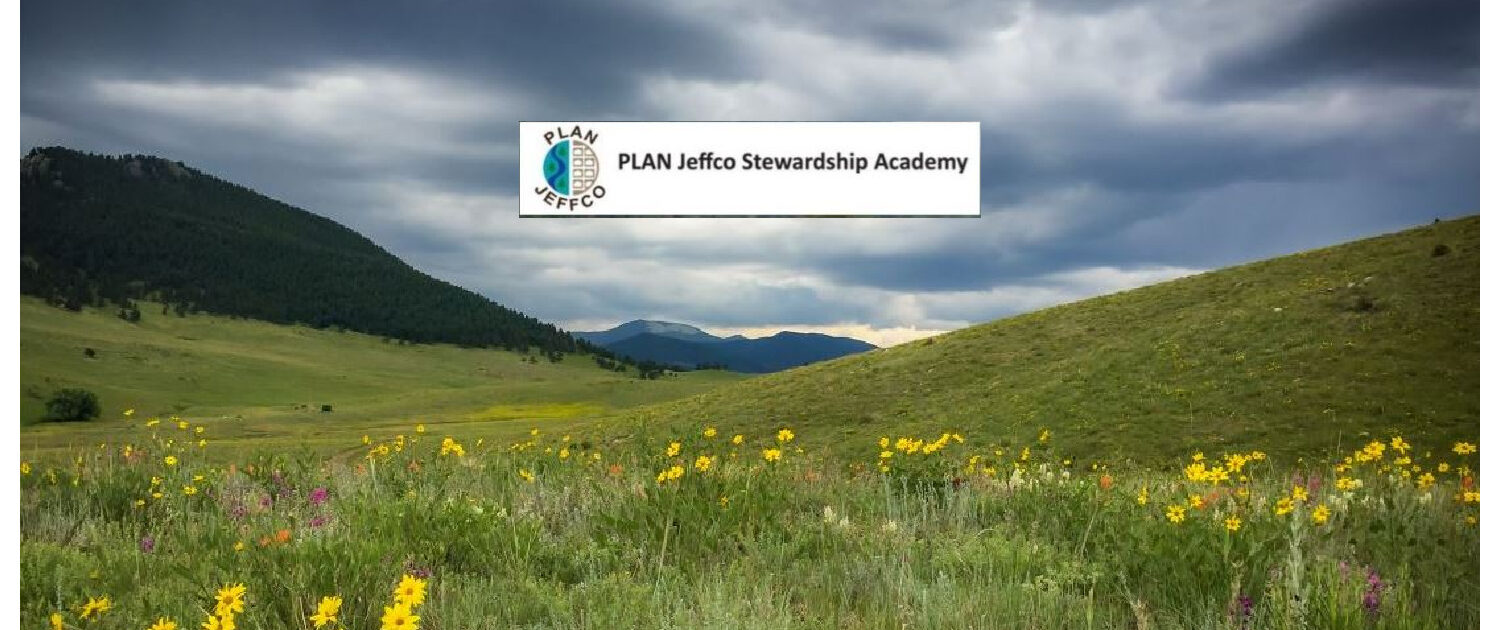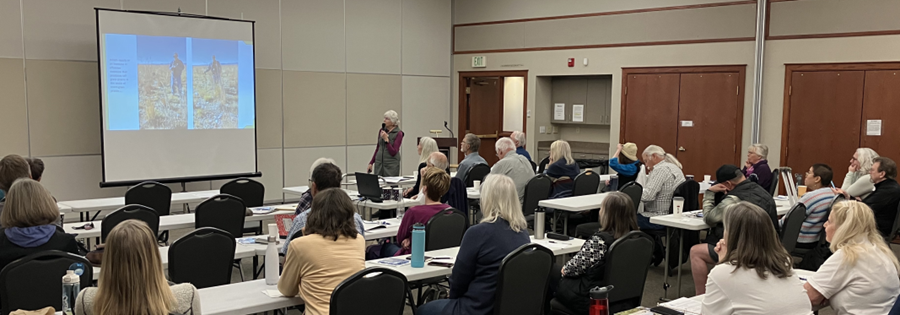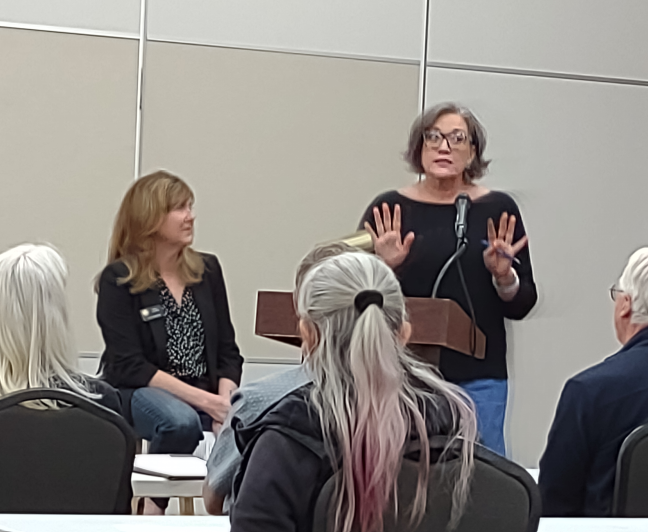
It’s the merry month of August and President’s Report time, time to catch up with what’s happening in the local land conservation community and spot-checks from around the world. New this month is a section on Signs of Hope. We hope you enjoy the read, and in so doing, we hope this may broaden perspectives in some small way.
– the Fine Folks at PLAN Jeffco
NOTE: in this Presidents Report you’ll read about lands that have been “Permanently Protected” by land organizations. Most of these protected lands have conservation easements on them and have very limited public availability, unlike our Jeffco Open Space Parks.
What is a conservation easement? It’s a promise to the land, a promise that encumbers the land, that protects the land from ever being developed into something other than what it already is. The land is still privately owned, so no — you cannot go trekking across the property without the owners’ permission, but you can rest assured that the land will not sprout condominiums or shopping centers.
Jeffco Open Space News & Events
https://www.jeffco.us/1523/News-Events
Know before you go! Check these sites for additional information on Park and Trail closures, openings, and other operations that may impact your Jeffco Open Space Park experience.
JCOS Alerts & Closures
JCOS News Releases
JCOS Event Calendar
JCOS Newsletters
Jeffco Fairgrounds
https://www.jeffco.us/calendar.aspx?CID=27
Please check the Fairgrounds website calendar for detailed event information.
Jefferson County – Sustainability Commission
https://www.jeffco.us/3406/Sustainability-Commission
Jefferson County – COVID-19 Updates
https://www.jeffco.us/3999/Coronavirus-Disease-2019-COVID-19
Colorado Open Lands
https://coloradoopenlands.org/ https://www.facebook.com/ColoradoOpenLands
Save the Date: Cheers for Conservation, Thursday September 21, 2023
Cheers for Conservation is back! We hope you’ll join us once again (or for the first time) for an evening of live music, good food, an exciting silent auction, and wonderful company as we celebrate another year of conservation across Colorado. We will celebrate at Five Fridges Farm – a 13-acre urban farm (permanently conserved in 1991) in the heart of Wheat Ridge is owned and operated by COL Board member Dr. Amanda Weaver. Ticket sales and more information coming soon at ColoradoOpenLands.org/Cheers !
Mountain Area Land Trust
https://savetheland.org/news/ https://www.facebook.com/MountainAreaLandTrustCO
Birding Walk with Evergreen Audubon. This walk aims to provide a baseline set of skills and helpful tools to identify birds. All are welcome; whether you’re new to the world of birding or an expert.
Sacramento Creek Ranch | 2234 Busch Run Rd, Fairplay
Saturday, August 12 | 7:30 – 11:00 a.m.
Cost: Free
RSVP to Evergreen Audubon: https://evergreenaudubon.org/events/birding-walk-with-mountain-area-land-trust-2/
History and Conservation Hike at Floyd Hill Open Space. Learn about the history of Floyd Hill Open Space (FHOS). This area provides unique public access to more than 12,000 acres of open space in an area that was once inaccessible.
FHOS (Hwy 40; just west of Homestead Rd and Floyd Hill I-70 exits) | Evergreen
Thursday, October 12 | 9:00 a.m. – noon
Cost: Free
RSVP to ma**@sa*********.org
Keep It Colorado
https://www.keepitco.org/
The Source, June 2023: https://mailchi.mp/keepitco/the-source-june-2023?e=2087fcd892
KIC has awarded $215,000 for transaction cost assistance to four Colorado land trusts: Colorado Cattlemen’s Agricultural Land Trust, Colorado Open Lands, Colorado West Land Trust, and the Montezuma Land Conservancy.
Douglas Land Conservancy
https://douglaslandconservancy.org/
Save the Date: 15th Annual JA Ranch Sunset BBQ, Saturday August 19th, 4-8 PM, Larkspur, CO
2023 Seasonal Journeys Hike Series
Brigid’s Day, Spring Equinox, May Day, Summer Solstice, First Fruits, Fall Equinox, Halloween, Winter Solstice.
Follow the postings from other Conservation Groups, listed at the bottom of our web pages:
Colorado Open Space Alliance (COSA)
Colorado Native Plant Society
Douglas Land Conservancy
Bird Conservancy of the Rockies
Colorado Cattlemen’s Agricultural Land Trust
Climate Change Articles of Interest
‘Unheard of’ marine heatwave off UK and Irish coasts poses serious threat
Published: 6/22/2023
https://www.theguardian.com/environment/2023/jun/19/marine-heatwave-uk-irish-coasts-threat-oysters-fish-high-temperatures
An “unheard of” marine heatwave off the coasts of the UK and Ireland poses a serious threat to species, scientists have warned. Sea temperatures, particularly off the north-east coast of England and the west of Ireland, are several degrees above normal, smashing records for late spring and early summer. The North Sea and north Atlantic are experiencing higher temperatures, data shows. The Met Office said global sea surface temperatures in April and May reached an all-time high for those months, according to records dating to 1850, with June also on course to hit record heat levels. The US National Oceanic and Atmospheric Administration has categorised parts of the North Sea as being in a category four marine heatwave, which is considered “extreme”, with areas off the coast of England up to 5C above what is usual. The Met Office says temperatures are likely to remain high because of the emerging El Niño weather phenomenon. …
It’s summer. But in the Northwest, spring never showed
As spring gets weirder, warmer and less stable, water supplies, ecosystems and agriculture are getting out of whack. Sarah Trent June 22, 2023
https://www.hcn.org/articles/north-climate-change-its-summer-but-in-the-northwest-spring-never-showed
In the middle of April, spring in the still wintery and wet Pacific Northwest seemed a long way off. Just two weeks later, though, Spokane hit a daily record 85 degrees Fahrenheit, setting off a month of historic heat. During a heat wave starting May 12, Portland’s metro area beat records for consecutive May days over 80 — nine — and 90 — four. Coastal communities set records in the 90s, too. Later in the month, Eastern Oregon and Washington toppled even more records, with some places peaking just shy of 100. Smoke drifted down from wildfires in Canada. Vegetable gardens bolted. It hardly rained at all. May, to Northwesterners, bore all the hallmarks of summer. …
In April, the Northwest’s snowpack looked about average. Then, it “did a disappearing act,” Bond’s office reported on June 8. Starting in early May, snow melted at record rates. Waterways flooded. West of the Cascades, the snowpack vanished two weeks earlier than usual. That has big implications for the whole region, said Dan McEvoy, a climatologist at the Western Regional Climate Center whose research includes spring heat waves. “One place that will show up is in earlier fire danger,” he said. By mid-June, more than a dozen wildfires had already burned hundreds of acres in Oregon and Washington. Another worry is drought. The National Weather Service reported that the area considered to be in drought grew in May. All of western Washington and northwest Oregon are expected to follow later this year. “That hinges on summer temperatures,” McEvoy said, but all signs point to a hot, dry summer too. …
What Will Our Gardens Look Like in 2050?
By Elizabeth Waddington Published June 13, 2023 09:55AM EDT
https://www.treehugger.com/what-will-our-gardens-look-like-in-2050-7511434
There are many reasons to think that our gardens will not look the same in 2050 as they do today. Gardening trends come and go. But more important are the changes that will come as the global climate continues to warm, and the differences that those changes will bring to the environmental conditions in many gardens and the plants that a specific garden contains. Models have been developed which show how conditions relating to temperatures, rainfall, and other factors will vary in a given area over the years to come, so scientists have a fairly clear idea of the expected trajectory for specific locations. We may not yet know exactly where we will end up, but we have a pretty good picture of the road we are on and the direction it is taking us. What we do not know is how well we, and gardeners in general, will be able to respond to the changes that we know are on their way. Will our gardens increasingly embrace sustainable practices? Or will many gardeners, in the face of hardships, give up on more traditional gardens altogether? …
Underground climate change is helping sink the land beneath us
By Kasha Patel July 11, 2023 at 3:15 p.m. EDT
https://www.washingtonpost.com/climate-environment/2023/07/11/underground-climate-change-chicago-sinking-ground/
If you think it’s hot walking around a city, it’s worse underground. Beneath the high rises in downtown Chicago, the ground has been heating up significantly for decades. In some locations, the excessive heat is causing deformations in the land and destabilizing buildings, according to a study released Tuesday [July 11, 2023]. Scientists are calling this subsurface heating “underground climate change,” the counterpart of what people experience above ground. Except this subterranean warming is much more intense than above the surface, especially in densely built cities. Over the past 70 years, ground beneath the Chicago Loop in the city’s downtown has warmed by 5.6 degrees Fahrenheit on average, according to the study author. “It’s actually more significant than what we are observing at the surface because of climate change,” said Alessandro Rotta Loria, author of the study and architectural engineer at Northwestern University. “Ground deformations triggered by underground climate change can be significant, and they can represent an issue for the performance of civil infrastructure.” …
[The results of a 3-year study done by Loria] found that underground temperatures beneath the building-heavy Loop were often 10 degrees Celsius warmer than beneath Grant Park, according to a news release. Air temperatures in underground structures were also up to 25 degrees Celsius warmer than undisturbed ground temperatures. …
Different soils and depths warm up at different rates. For instance, shallower depths experience the most temperature variations. Yet limestone layers further below ground also experience significant warming as the shallower soils, if not more. The warming also can affect structures above ground. The land contracted over soft, stiff clay layers but expanded at hard clay layers. Shallower and deeper sand layers and bottom limestone layers expanded as temperatures rose, as well. In areas, the model showed land could rise as much as 12 millimeters and sink as much as 8 millimeters. Millimeters might not sound like much, but he said those relatively small displacements can have significant effects in civil engineering. It can cause unwanted sinking on building foundations, angular distortion in slabs and beams and tilting. It can also cause cracking, which could allow water to seep in and corrode the structure. …
Rotta Loria said this underground warming could be deterred. One approach is to harvest some of this energy for power and “increase the total amount of heating energy that could be supplied to buildings … mitigate underground climate change in Chicago and other cities,” the study said. … (heat pumps)
Water Wars Articles of Interest ..
Humans have used enough groundwater to shift Earth’s tilt. Pumping groundwater for drinking and irrigation has had a noticeable effect on the entire planet, data show
By Aara’L Yarber June 27, 2023 at 6:00 a.m. EDT
https://www.washingtonpost.com/science/2023/06/27/groundwater-use-planet-earth-tilt/
Rampant removal of groundwater for drinking and irrigation has altered the distribution of water on Earth enough to shift the planet’s tilt, according to a sweeping new study. The finding underscores the dramatic impact that human activity can have on the planet. Humans pump most of our drinking water from natural underground reservoirs called aquifers. Researchers calculate that between 1993 and 2010, we removed a total of 2,150 gigatons of groundwater — enough to fill 860 million Olympic swimming pools.
According to the new study, published on June 15 in the journal Geophysical Research Letters, moving all that water has shifted Earth’s tilt 31.5 inches eastward. Many people might imagine Earth’s shape as a perfect sphere, but it’s not; it’s an oblate spheroid, with high mountains and deep ocean trenches that distribute mass unevenly and make the planet resemble a lumpy potato. The whole thing is also spinning like a top, and if you move enough mass from one place to another, the planet will wobble as it spins. “I kind of liken it to a waterlogged softball,” said James Famiglietti, a hydrologist at Arizona State University who was not involved in the study. “When a softball or baseball gets soaked, it gets waterlogged, and when you throw it, it wobbles funny. That’s what’s happening here.” …
Rewilding Articles of Interest …
One man’s mission to reforest a barren Irish hillside. Eoghan Daltun has spent 14 years rewilding part of Beara peninsula into a showcase of diversity
https://www.theguardian.com/environment/2023/jul/04/reforest-rewilding-beara-peninsula-ireland-eoghan-daltun
Eoghan Daltun stood on a slope and pointed to a distant vista of verdant fields, craggy hills and conifer trees across the Beara peninsula in west Cork. Sun glinted off the rocks and sheep grazed in meadows. It was serene – the sort of bucolic panorama that draws tourists and appears on Irish postcards to embody the Emerald Isle. Daltun, however, had news for anyone tempted to marvel at nature’s majesty. “It’s ecological illiteracy. They can’t read the landscape they’re looking at. That is a completely barren landscape. It is biologically empty.” The scenery, he said, represented environmental degradation. The sheep had devoured wild flowers and seedlings, preventing native trees from growing, and the conifers were part of a monoculture plantation that devastated biodiversity. “We are in the midst of a serious ecological crisis.” Daltun is a pioneer in a rewilding movement that seeks to restore native forests that once blanketed 80% of Ireland and now cover just 1%, one of the lowest rates in Europe. …
Over the past 14 years the farmer-cum-activist, author and sculptor has turned 30 acres of rugged hillside in Beara, a windswept peninsula overlooking the Atlantic Ocean, into a showcase of biodiversity and climate action. Daltun is part of a global effort to rewild gardens, estates and countryside to try to halt catastrophic biodiversity losses. …
Rewilding initiatives have spread. Trinity College Dublin replaced manicured lawns in 2020 with turf that included 25 types of native Irish wildflower, resulting in a riot of colour and foliage three years later. Randal Plunkett, who owns an estate in County Meath, replaced cattle, sheep and many crops with wilderness. Ireland’s Health Service Executive said last week it may rewild the grounds of its headquarters. …
How an Iberian rewilding plan aims to repopulate ‘empty Spain’
Przewalski’s horses, black vultures & semi-wild cattle could revive biodiversity and economy in corner of eastern Spain.
https://www.theguardian.com/world/2023/jul/07/iberian-rewilding-project-aims-repopulate-empty-spain
In a small clearing between the oak trees of a forested plateau in the Iberian highlands in eastern Spain, a group of Przewalski’s horses graze on grass and small shrubs; the pale beige of their belly contrasting against the greyish green of the landscape. Short and stockily built, the endangered Przewalski’s horse is considered the world’s last wild horse. Originating from the open steppes of central Asia, they were driven to extinction in the wild and successfully reintroduced to their native habitats at the turn of the century. The herd of 10 animals arrived in this rugged mountain chain, a two-hour drive from Madrid, from a reserve in France in May. The horses’ introduction into the 850,000-hectare (210,040-acre) landscape of steppes, river canyons, pine, oak, juniper forests and farmland is part of Rewilding Spain’s 20-year initiative to return one of Europe’s least populated areas to a wilder state – and its first project. After acclimatising in a 17-hectare enclosure, the horses will be released in September – which could make this little-known corner of Spain the second place in Europe after Chornobyl where Przewalski’s horses roam free. …
Once covered by large herds of sheep, decades of land abandonment and depopulation have earned the area, more than five times the size of Greater London, the name of “empty Spain”. Today, fewer than two people per square kilometre live in these highlands. Low levels of human disturbance have allowed the return of fallow, roe and red deer – which can be spotted grazing at sunset – and the largest population of Egyptian vultures in Europe. Rewilding Spain’s wildlife recovery scheme is focusing on reintroducing large herbivores and predators, such as the black vulture and Iberian lynx, which once inhabited the land. …
The Przewalski’s horses are well suited to the local climate, which turns bitterly cold in winter, and are the closest animals to the extinct wild horses that would have grazed the land. They can therefore fulfil a similar ecological function. Restoring natural grazing will help improve biodiversity and regenerate the soil, says Pablo Schapira, the initiative’s team leader. Years of intensive grazing by livestock treated with antibiotics and antiparasitics have killed off dung beetles, for example, which help bring nutrients back into the soil. Elsewhere, semi-wild Serrano horses, an endangered local breed, and a herd of tauros, cattle back-bred to resemble aurochs, an extinct wild bovine species, have been released. By eating long grass and shrubs, the grazers have another critical role to play: they reduce the forest’s biomass which is potential fuel for fires. “We are facing a new generation of fires that are so big they are changing the temperature of the environment and are nearly impossible to stop,” says Schapira. …
Conservation Articles of Interest
Amazon facing ‘urgent’ crime crisis after gutting of protections, says drugs tsar
https://www.theguardian.com/world/2023/jun/28/organized-crime-drives-environmental-amazon-devastation
The Brazilian government’s drug policy chief has admitted that the rapid advance of drug factions into the Amazon rainforest has produced a “a very difficult situation” in the region, as a UN report warned that flourishing organized crime groups were driving a boom in environmental devastation. Marta Machado, the national secretary for drug affairs, said the previous administration’s intentional dismantling of Brazil’s environmental and Indigenous protection agencies had created a dangerous vacuum in the Amazon which had been occupied by powerful crime syndicates from Rio de Janeiro and São Paulo. …
Machado laid the blame for the crisis with the government of former president Jair Bolsonaro, who stripped away rainforest protections during his four-year term of office. …
The group’s annual World Drug Report said drug trafficking was “exacerbating and amplifying an array of other criminal economies in the Amazon Basin, including illegal land occupation, illegal logging, illegal mining, trafficking in wildlife and other crimes that affect the environment”. “‘Narco-deforestation’ – the laundering of drug trafficking profits into land speculation, the agricultural sector, cattle ranching and related infrastructure – is posing a growing danger to the world’s largest rainforest,” warned the report, which focused on the Bolivian, Brazilian, Colombian and Peruvian portions of the Amazon that comprise about 87% of the region. …
Fire Season Updates
Canadian wildfire smoke to engulf New York skies again
Smoke is expected to enter New York airspace on Wednesday and Thursday, with ‘unhealthy’ levels in the state’s western region June 27, 2023
https://www.theguardian.com/us-news/2023/jun/27/canada-wildfire-smoke-returns-new-york-air-quality
As the wildfires in Canada continue to shroud much of the midwest in a thick haze of smoke, New Yorkers are preparing yet again for the smoke to make its way further east. …
Earlier this month, New Yorkers all over the state were engulfed in smog after Canada’s wildfires drifted south. The smoke affected the air in more than a dozen US states and put more than 50 million people under air quality alerts. Researchers previously told the Guardian on 7 June, the US had experienced its worst toxic air pollution in recent recorded history and were exposed to levels of pollution that were more than five times above the national air quality standard. The Canadian Interagency Forest Fire Center (CIFFC) has said their ongoing wildfire season is the worst on record, per Accuweather. More than 19 million acres have burned, a number that is only growing. …
Can mushrooms prevent megafires?
By Stephen Robert Miller July 10, 2023 at 6:30 a.m. EDT
https://www.washingtonpost.com/climate-solutions/2023/07/10/wildfire-prevention-mushroom-composting/
If you’ve gone walking in the woods out West lately, you might have encountered a pile of sticks. Or perhaps hundreds of them, heaped as high as your head and strewn about the forest like Viking funeral pyres awaiting a flame. These slash piles are an increasingly common sight in the American West, as land managers work to thin out unnaturally dense sections of forests — the result of a commitment to fire suppression that has inadvertently increased the risk of devastating megafires. “We have an epidemic of trees in Colorado,” said Stefan Reinold, a forester with Boulder County’s Parks and Open Space department.
In the Rocky Mountain forests that he manages, a century of stamping out wildfires as soon as they arose failed to account for the role fire plays in maintaining healthy forest ecosystems. Today, the resulting abundance of densely packed pines and firs fuels huge blazes. In response, the federal government has committed nearly $5 billion in the Inflation Reduction Act and Bipartisan Infrastructure Law to thinning forests on about 50 million Western acres over the next 10 years. Although this can be accomplished with prescribed burns, the risk of controlled fires getting out of hand has foresters embracing another solution: selectively sawing trees, then stripping the limbs from their trunks and collecting the debris. The challenge now is what to do with all those piles of sticks, which create fire hazards of their own. Some environmental scientists believe they have an answer: mushrooms. Fungus has an uncommon knack for transformation. Give it garbage, plastic, even corpses, and it will convert them all into something else — for instance, nutrient-rich soil. …
When slash piles are set alight, they burn longer and hotter than most wildfires over a concentrated area. This leaves behind blistered soil where native vegetation struggles for decades to take root. As an alternative, foresters have tried chipping trees on-site and broadcasting the mulch across the forest floor, where it degrades at a snail’s pace in the arid climate. Boulder County also carts some of its slash to biomass heating systems at two public buildings. Jeffrey Ravage is a forester with the Coalition for the Upper South Platte, which manages protection and restoration of a more-than-million-acre watershed in the mountains southwest of Denver. He describes the action of saprophytes, a type of fungi that feeds off dead organic matter, as “cold fire.” Like a flame, saprophytic fungi break organic material into carbon compounds. Mycelium, the often unseen, root-like structure of the fungi, secretes digestive enzymes that release nutrients from the substrate it consumes. Whereas a flame destroys nearly all organic nitrogen, mycelium can fortify nitrogen where it’s needed in the forest floor. …
Signs of Hope
World’s biggest investment fund warns directors to tackle climate crisis or face sack. Norway’s sovereign wealth fund threatens to vote against boards on firms it holds investments with over lax climate and social targets
https://www.theguardian.com/business/2023/feb/03/worlds-biggest-investment-fund-warns-directors-to-tackle-climate-crisis-or-face-sack
Norway’s sovereign wealth fund, the world’s single largest investor, has warned company directors it will vote against their re-election to the board if they do not up their game on tackling the climate crisis, human rights abuses and boardroom diversity. Carine Smith Ihenacho, the chief governance and compliance officer of Norges Bank Investment Management, which manages more than 13tn Norwegian kroner (£1tn) on behalf of the Norwegian people, said the fund was preparing to vote against the re-election of at least 80 company boards for failing to set or hit environmental or social targets. … “We all know, we live in a world with a climate crisis, and we have a role to play and then companies have a role to play,” Smith Ihenacho said. “So we have stepped up our expectations towards the companies when it comes to setting targets to get to that net zero [emissions] by 2050 target. And we will push the companies more in setting targets and understanding how they’re going to get there.”
New laws in three states prevent utilities from charging customers for political activities
https://www.washingtonpost.com/newsletters/the-climate-202/
Utilities across the country use money collected from customers’ monthly bills to fund their political activities, including lobbying, advertisements and trade association membership dues. That’s about to change in three states — Colorado, Connecticut and Maine — that recently passed laws to prohibit this practice. Proponents of the measures, which garnered bipartisan support, say they will prevent customers from footing the bill for political activities they might oppose, including lobbying against climate policies. They acknowledge the measures probably won’t save individual consumers much money but say they’re important transparency steps. …
Groundbreaking youth-led climate trial comes to an end in Montana
https://www.theguardian.com/us-news/2023/jun/20/held-v-montana-climate-trial-youth-end
A groundbreaking climate trial came to an early close on Tuesday as lawyers on each side presented a very different picture of who can be held responsible for the climate crisis. Attorneys representing the lawsuit’s young challengers said Montana officials and agencies must be held accountable for exacerbating the crisis, and thereby violating the plaintiffs’ state constitutional rights. But the defense argued that the climate crisis is a global problem, and that if Montana is contributing to it, plaintiffs should work to change that through the legislature. The trial for Held v Montana began in the state’s first judicial district court in the capital city of Helena last week, marking the first constitutional climate trial in US history. A ruling will now follow from Judge Kathy Seeley, who has been hearing the case, with expectations that this could take several weeks to emerge. …
Jared Polis, Western governors push geothermal energy development during Boulder conference
https://coloradosun.com/2023/06/30/western-states-governors-geothermal-energy
A year after announcing his ambitious bipartisan Heat Beneath Our Feet initiative focusing on geothermal energy development in the West, Gov. Jared Polis and five other Western governors met this week to discuss progress and how to begin turning 12 months of research and discovery into strategies to expand geothermal technologies across the U.S. David Turk, the secretary of the Department of Energy and one of the experts at Monday’s discussion, said 95% of the United States’ geothermal potential lies beneath the Western states of Colorado, Idaho, Nevada, Oregon and California. The problem is developing the infrastructure needed to convert the heat into electricity and get the power to the grid, Turk said. The U.S. today produces 25% of the world’s geothermal energy, or 3.7 gigawatts, but that’s just a fraction of what the country is capable of producing, Turk added. Estimates have the number at 5,000 gigawatts, but Turk said, “if we develop these reserves without the infrastructure to transmit, it does us no good. Right now, we’re building out only 1% of our transmission capabilities and we need to build out like we never have in this country.” …
Several case studies show geothermal’s effectiveness in powering the grid. California has two of the largest geothermal reservoirs in the United States, the Salton Sea resource area and the Geysers, between Lake, Mendocino and Sonoma counties, with an estimated generation capability of 2,200 megawatts and 1,800 megawatts, respectively. In Idaho, Boise is already powered entirely by geothermal energy. Nevada has 26 operating geothermal plants capable of generating 827 megawatts of power collectively in any given hour. And while Colorado currently has no geothermal electrical power generating facilities, the state geological survey says a number of companies are actively looking at the potential for generating geothermal electricity in several regions. …
The 2023 analysis concluded that the country potentially has 90.5 gigawatts of geothermal-derived electricity that could be deployed by 2050. This is more capacity than the entire U.S. Navy’s nuclear fleet in 2021, and enough to power an estimated 28 million homes and cover 23% of national residential demand. …
BLM aims to grow wind and solar development on public lands – High Country News, June 23, 2023
https://www.hcn.org/articles/climate-desk-bureau-of-land-management-blm-aims-to-grow-wind-and-solar-development-on-public-lands
Last week, the federal Bureau of Land Management proposed a new rule that would reduce fees for wind and solar development on public lands by 80%. Regulators at the BLM say the move could accelerate renewable power production on federal lands and help achieve President Joe Biden’s goal of a carbon-free power sector by 2035. Solar and wind developers and advocates lauded the proposed rule as an important step toward a clean energy transition on U.S. public lands. For more than a century, energy production on federal lands was limited almost exclusively to coal, oil and gas extraction. Experts say the rules in place were designed to optimize fossil fuel production, not renewables — resulting in disproportionately high costs for clean energy developers that the proposed rule aims to address. …
To build an energy project on public lands, the BLM charges developers rental fees for the land itself and additional fees based on the amount of energy produced. The Energy Act of 2020, a bipartisan law to advance clean energy innovation, authorized the agency to reduce those fees for wind and solar projects. In 2022, the agency issued internal guidance that lowered fees by about 50%. Last week’s proposed rule would cut costs another 30%. It would also codify those reductions, making it more difficult for future presidential administrations to change course. The rule would also streamline approval processes by allowing the agency to accept leasing applications from renewables developers without holding a competitive auction in areas prioritized for clean energy development.
An entrepreneur is one big step closer to capturing methane leaking from Colorado coal mines
Tracy Ross 4:30 AM MDT on Jul 4, 2023
https://coloradosun.com/2023/07/04/methane-leak-study-colorado-public-lands/
An entrepreneur and environmental scientist has moved a step closer toward being able to capture some of the estimated 1.3 million cubic feet of methane gas leaking from coal mines in Pitkin County each year, a key advance toward one day reducing carbon emissions from mines and turning a harmful greenhouse gas into a fuel. Chris Caskey received a “categorical exclusion” from the White River National Forest on June 22 that will allow him to begin inventorying and studying methane gas leaking from coal mine vents across 5 square miles in Coal Basin near Redstone. The decision authorizes Caskey’s Delta Brick & Climate Company to use ground-based monitoring units and aircraft to gather data in the White River National Forest that will relay the volume, concentration and location of methane gas venting into the atmosphere from mining audits and other surface features. Jennifer Schuller, deputy district ranger for the national forest, called the decision “precedent setting,” although it is just the first step in a joint project between Caskey’s brick and climate company, in Montrose, and the Aspen-based Community Office for Resource Efficiency, a nonprofit dedicated to shepherding the Roaring Fork Valley to a carbon-free, net-zero energy future. …
Scientists say poisonous pea could be made vital climate crisis crop
Gene editing or selective breeding hold promise of a non-toxic variety of the protein-rich and drought-resistant plant.
https://www.theguardian.com/science/2023/jul/08/uk-scientists-could-make-poisonous-grass-pea-a-valuable-food-crop
It is grown in some of the world’s most inhospitable, arid regions and is noted for being rich in protein. But the grass pea – although hardy and nutritious – comes with a catch. It contains a poison that can occasionally trigger irreversible paralysis, particularly among individuals who are already undernourished. As a result, it is often grown only as an insurance crop, to provide short-term food supply when harvests of other crops have failed. Nevertheless, poisoning from Lathyrus sativus still occurs in Bangladesh, India, Pakistan, Nepal, Ethiopia and Algeria. But now a group of UK scientists studying the grass pea have revealed the secrets of its poison production. In the near future they expect to create versions that are free of its toxic side-effects. “Very soon, we will be able to make safe versions of the grass pea and provide our undernourished, overheated planet with a very valuable crop,” said project scientist Dr Anne Edwards, of the John Innes Centre in Norfolk. …
Let’s keep each other in the loop. When you hear of conservation group activities that merit distribution or articles that lend hope to our conservation efforts, send the link to Co*******@PL********.org and we’ll include in the next President’s Report.

The post Presidents Report 7/31/2023 appeared first on PLANJeffco.


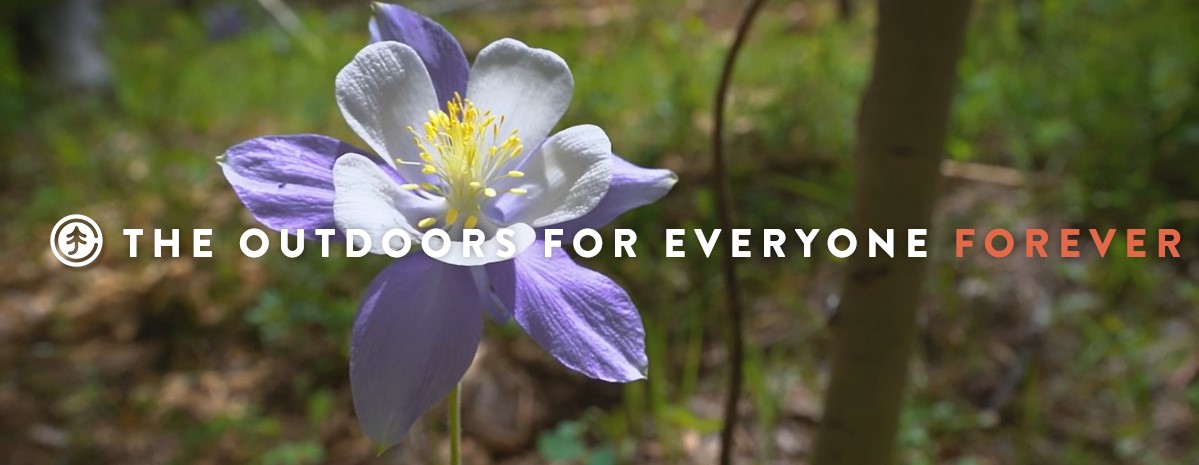 Twenty-five years ago, a group of volunteers formed an organization called the Jeffco Open Space Foundation, whose purpose was (and is) to raise funds for programs and initiatives that align with its vision, mission, beliefs and its focus areas.
Twenty-five years ago, a group of volunteers formed an organization called the Jeffco Open Space Foundation, whose purpose was (and is) to raise funds for programs and initiatives that align with its vision, mission, beliefs and its focus areas.
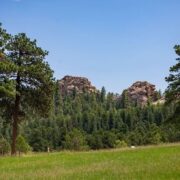
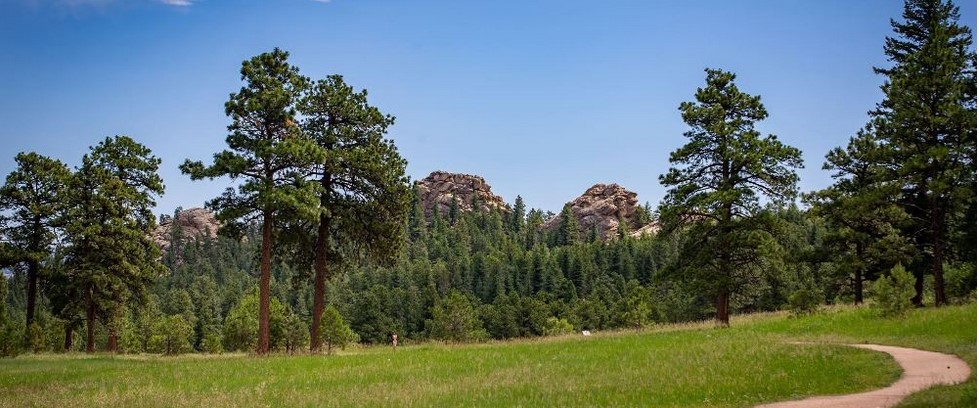 If you’ve recently been out to Alderfer/Three Sisters Park recently, you’ll notice that there’s a lot of forestry activity happening, especially in the eastern one-third of the park.
If you’ve recently been out to Alderfer/Three Sisters Park recently, you’ll notice that there’s a lot of forestry activity happening, especially in the eastern one-third of the park.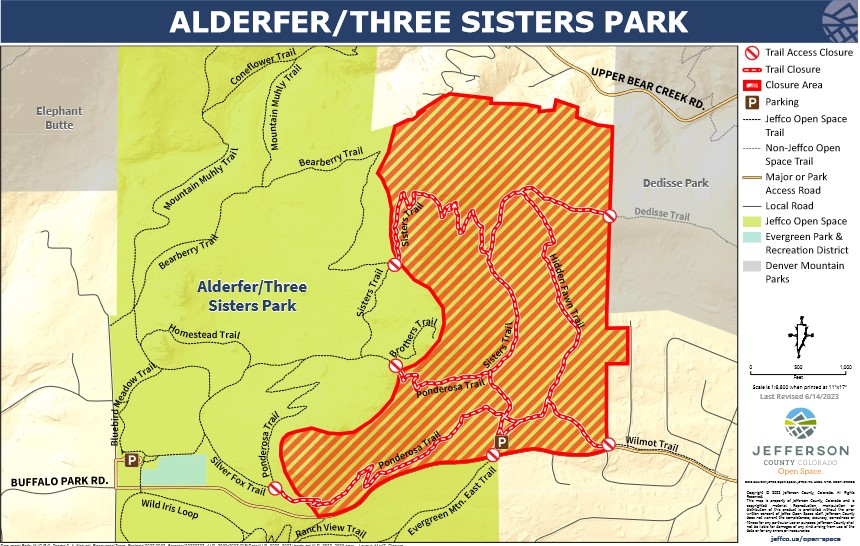










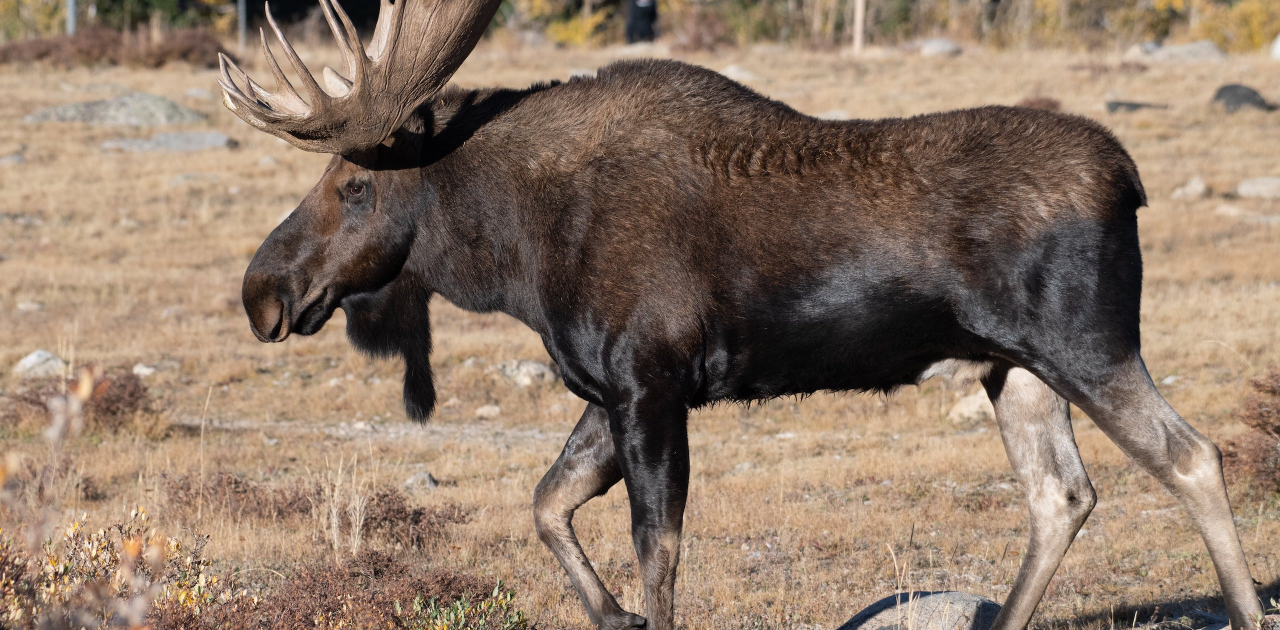 Have you seen a moose in our Open Space parks yet? If you haven’t, you may soon. Moose, which was a rarity in Colorado only 50 years ago, are now routinely sighted in Clear Creek and Jefferson Counties since their introduction in 1978 — transplants from Utah and Wyoming. The transplants have delighted in their new home state. According to biologists from Colorado Parks & Wildlife, there are an estimated 3500 moose roaming the Rockies between Red Feather Lakes and Pagosa Springs.
Have you seen a moose in our Open Space parks yet? If you haven’t, you may soon. Moose, which was a rarity in Colorado only 50 years ago, are now routinely sighted in Clear Creek and Jefferson Counties since their introduction in 1978 — transplants from Utah and Wyoming. The transplants have delighted in their new home state. According to biologists from Colorado Parks & Wildlife, there are an estimated 3500 moose roaming the Rockies between Red Feather Lakes and Pagosa Springs.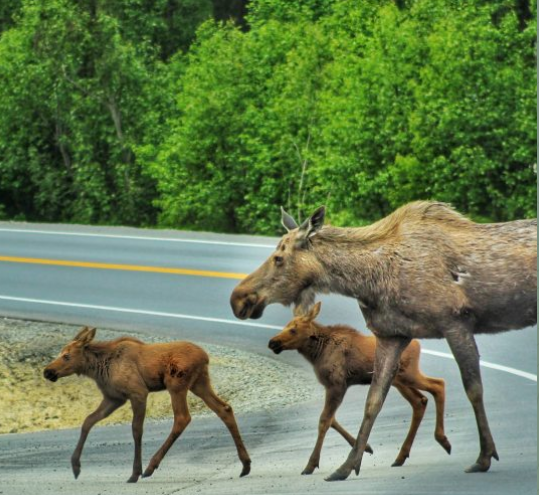 which are rattlesnakes, ticks, and other dogs. Add to the list an angry moose. Moose are not afraid of humans, and, while they are not known to be aggressive, they do not have a gentle temperament, especially during the spring calving and the fall mating seasons. A moose cow can be terrifying when defending her young, even facing down and driving off a grizzly bear. And nothing angers a moose more than a dog, which resembles one of the moose’s primary predators, the wolf. “In Alaska, up to 10 people are killed every year by irritated moose, and moose injure more people than any other wild animal in the Americas” — that’s North and South America, combined, according to Stephen Knapp’s article, “Moosin’ Around”.
which are rattlesnakes, ticks, and other dogs. Add to the list an angry moose. Moose are not afraid of humans, and, while they are not known to be aggressive, they do not have a gentle temperament, especially during the spring calving and the fall mating seasons. A moose cow can be terrifying when defending her young, even facing down and driving off a grizzly bear. And nothing angers a moose more than a dog, which resembles one of the moose’s primary predators, the wolf. “In Alaska, up to 10 people are killed every year by irritated moose, and moose injure more people than any other wild animal in the Americas” — that’s North and South America, combined, according to Stephen Knapp’s article, “Moosin’ Around”.




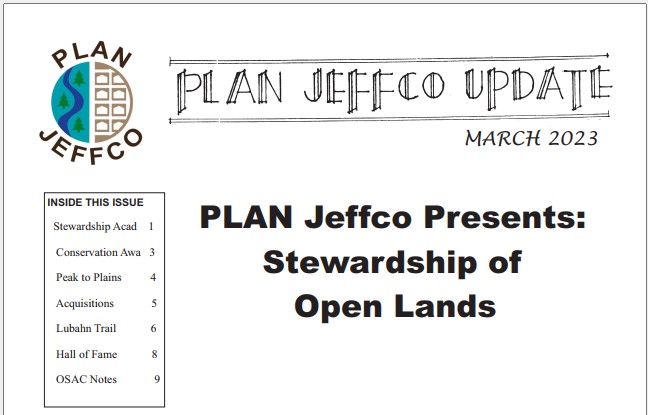

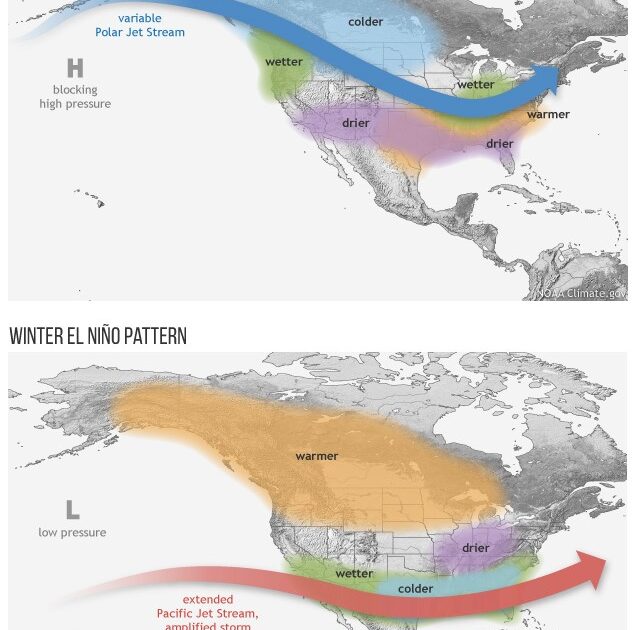 If you’re a regular — or even an occasional — visitor to our Jeffco Open Space Parks, you’ll know about the mud season routine. Walk through, not around the mud.
If you’re a regular — or even an occasional — visitor to our Jeffco Open Space Parks, you’ll know about the mud season routine. Walk through, not around the mud.

